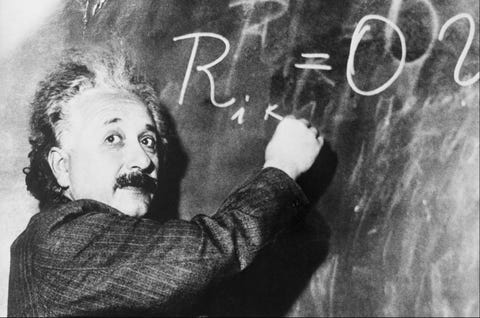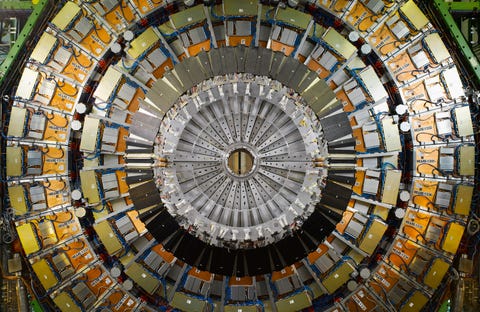It’s just a matter of time before we build one that can take us into the far future.
Source: Popular Mechanics
In September 2015, cosmonaut Gennady Padalka arrived back on Earth for the last time. He had just completed his sixth mission in space and broke the record for most cumulative time spent beyond Earth’s atmosphere: 879 days. And because of these 2.5 years spent orbiting the planet at high speeds, Padalka also became a time traveler, experiencing Einstein’s theory of general relativity in action.
“When Mr. Padalka came back from his adventures, he found the Earth to be 1/44th of a second to the future of where he expected it to be,” explains J. Richard Gott, Princeton physicist and author of the 2001 book Time Travel in Einstein’s Universe, “He literally traveled…into the future.”
While being a fraction of a second younger than if he had stayed on Earth isn’t mind-bending stuff, it nonetheless gave Padalka, the distinction as the “current time traveler record,” according to Gott.
Although not exactly a plutonium-charged DeLorean, time travel is anything but fiction. Real astrophysicists like Gott are pretty sure they know how to build a time machine, and intense speed—much, much faster than Padalka’s orbital jaunt—is the key ingredient.
A Time Travel Crash Course

Until the 20th century, time was believed to be completely immutable and time travel a scientific impossibility. In the 1680s, Sir Isaac Newton’s thought time progressed at a consistent pace throughout the universe, regardless of outside forces or location. And for two centuries, the scientific world subscribed to Newton’s theory.
Until 26-year-old Albert Einstein came along.
In 1905, Einstein revealed his ideas on special relativity, using this framework for his theory of general relativity a decade later. Einstein’s universe-defining calculations introduced, well, lots of things, but also some concepts related to time. The most important being that time is elastic and dependent on speed, slowing down or speeding up depending on how fast an object—or person— is moving.
In 1971, four cesium beam atomic clocks flew around the world and were then compared to ground-based clocks. The resulting minuscule time difference proved that Einstein was onto something. There’s also another technology, tucked inside your smartphone, that also validates Einstein’s theory.
“Without Einstein’s general theory of relatively, our GPS system wouldn’t be working.”
“Without Einstein’s general theory of relatively, our GPS system wouldn’t be working,” says Ron Mallet, an astrophysicist and author of the book Time Traveler: A Scientist’s Personal Mission to Make Time Travel a Reality. “That’s also proof that Einstein’s [theories are] correct.”
But apart from this mutable version of time, Einstein also calculated the speed of light. At 300,000,000 meters (or 186,282 miles) per second, Einstein describes the figure as the “ultimate speed limit” and a universal constant no matter if one is sitting on a bench or traveling in a rocket ship. This content is imported from {embed-name}. You may be able to find the same content in another format, or you may be able to find more information, at their web site.
The last bit of Einstein’s time-bending ideas suggest that gravity also slows time, meaning time runs faster where gravity is weaker like the vast emptiness among massive celestial bodies like the sun, Jupiter, and Earth.
Fast forward a century later, and all of these theories—highly summarized, of course—now form the building blocks of astrophysics, and buried among all this expert-level math, Einstein also proved that time travel was possible.
The Subatomic Time Machine

In fact, not only is time travel possible, it’s already happened—it just doesn’t look like your typical sci-fi film.
Returning to our time-traveling cosmonaut Padalka, his 1/44-second jump into the future is so minuscule because he was only traveling 17,000 miles per hour. That isn’t very fast, at least in comparison to the speed of light. But what would happen if we created something that could go much faster than geostationary orbit? We are not talking a commercial jetliner (550 to 600 miles an hour) or a 21st century rocket to the ISS (25,000 miles per hour), but something that could approach 186,282 miles per second?
“On a subatomic level, it’s been done,” says Mallett. “An example is…the Large Hadron Collider. It routinely sends subatomic particles into the future.”
The particle accelerator has the ability to propel protons at 99.999999 percent the speed of light, a speed at which their relative time is moving about 6,900 times slower compared to their stationary human observers.
“The Large Hadron Collider…routinely sends subatomic particles into the future.”
So, yes, we’ve been sending atoms into the future and we’ve been doing it for the last decade, but humans are another matter.
Gott says given that we propel particles nearly the speed of light on a regular basis, conceptually, it’s rather simple for humans to time travel into the future. “If you want to visit Earth in the year 3000,” Gott says, “all you have to do is to get on a spaceship and go 99.995 percent the speed of light.”
Let’s say a human is put on such a ship and sent to a planet that’s a little less than 500 light years away (for example, Kepler 186f), meaning if they traveled at 99.995 percent of the speed of light, it would take them about 500 years to get there since they are going at nearly the speed of light.

After a quick snack and a bathroom break, they would then turn around and head back to Earth, which would take another 500 years. So in total, it would take about a thousand years for them to arrive safely back home. And, on Earth, it would be the year 3018.
However, since they were moving so fast, the resulting time dilation wouldn’t seem like a thousand years for them since their internal clock has slowed. “[Their] clock will be ticking at 1/100th of the rate of the clocks on Earth. [They] are only going to age about 10 years,” says Gott. While a millennium would pass for us, for them it would be a decade.
“If we [on Earth] were watching through the window, they would be eating breakfast veeeerrry slooooowly,” says Gott, “But to [them], everything would be normal.”
But there is a massive gulf between what is theoretical and what is real. So how do we overcome the immense technological challenges of building a time machine?
The Not-So-Distant Future of Human Time Travel
Building a time-traveling spaceship may be the best place to start, but the engineering obstacles, at least for now, are enormous. For one, we are not even close to having a spaceship that can travel the speed of light. The fastest spacecraft ever created will soon be the Parker Solar Probe, which will launch this summer and travel only .00067 percent the speed of light.
There’s also the enormous amount of energy that would be needed to propel a ship to go that fast. Gott suggests that highly efficient antimatter fuel could be the key and other world agencies and scientists also think such a fuel could be a potentially invaluable piece to interstellar travel.
But ensuring the safety of the human cargo on such a futuristic mission would also be tricky. First of all, the ship would need to carry enough supplies, like food, water, and medicine, and be self-sufficient for the entire journey.
Then there’s the whole acceleration thing. To make sure our hypothetical traveler wouldn’t be obliterated by overwhelming g-forces, the ship would need to gradually and steadily accelerate. While steady 1g acceleration (like what we feel on Earth) for a long period of time would eventually get the ship to approach near speed of light, it would add to the length of the trip and minimize how far in the future one could go.
Source: Popular Mechanics

































Leave a Comment
You must be logged in to post a comment.